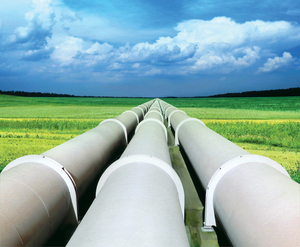US natural gas to enter global market as exports expand

May 4, 2017
BY Andy Huenefeld, Kinect Energy Group
The U.S. DOE approved the Golden Pass liquefied natural gas (LNG) export facility in late April for exports to non-free-trade-agreement countries. The facility slated for an export capacity of 2.2 Bcf/day of LNG got Federal Energy Regulatory Commission approval earlier. While investment is not finalized and there is no solid timetable for construction, it indicates the new administration’s view of LNG exports. The “America First” message touted during the campaign and the early stages of the Trump presidency led some to believe that future LNG export approvals would be tougher to come by, but at least for now, this does not appear to be the case. In issuing the approval, DOE Secretary Rick Perry alluded to more facilities getting the go-ahead in the future.
Golden Pass is on the Texas Gulf Coast and joins Sabine Pass, Cove Point, Corpus Christi, Cameron LNG, Freeport, Elba Island, Magnolia LNG and Lake Charles as projects receiving the required approvals from FERC and DOE. Jordon Cove, the pending West Coast export facility, has DOE approval, but has been tied up with environmental concerns for years. This facility, which would have more ready access to higher-priced Asian markets, appears to have gained some recent traction. Dominion’s Cove Point project, expected online before this year, is the first East Coast facility in the queue ahead of the Elba Island liquefaction project. The remaining facilities are all located on the Gulf Coast.
In addition to the roughly 2.2 Bcf per day of capacity already online at Sabine Pass, nearly 9 Bcf per day of capacity is currently under construction. The Magnolia LNG, Golden Pass, Lake Charles projects have not started construction, along with further expansions at Sabine Pass and Cameron. About 7 Bcf per day of capacity has been approved, but construction has not begun. Combined, approved exports total nearly 18 Bcf per day, which represents about 26 percent of current domestic supply.
Advertisement
With LNG export capacity significantly ramping up over the coming years and a large percentage of that tied to long-term contracts, a major sea change in the U.S. market approaches. Not only will LNG exports bring to the table a significant demand sector that didn’t exist 14 months ago, but growing global connectivity will greatly increase the number of risk factors that impact U.S. consumers. North American natural gas will enter the global stage.
Advertisement
Related Stories
The U.S. exported 31,160.5 metric tons of biodiesel and biodiesel blends of B30 and greater in May, according to data released by the USDA Foreign Agricultural Service on July 3. Biodiesel imports were 2,226.2 metric tons for the month.
CARB on June 27 announced amendments to the state’s LCFS regulations will take effect beginning on July 1. The amended regulations were approved by the agency in November 2024, but implementation was delayed due to regulatory clarity issues.
Legislation introduced in the California Senate on June 23 aims to cap the price of Low Carbon Fuel Standard credits as part of a larger effort to overhaul the state’s fuel regulations and mitigate rising gas prices.
The government of Brazil on June 25 announced it will increase the mandatory blend of ethanol in gasoline from 27% to 30% and the mandatory blend of biodiesel in diesel from 14% to 15%, effective Aug. 1.
The U.S. EIA reduced its 2025 and 2026 production forecasts for a category of biofuels that includes SAF in its latest Short-Term Energy Outlook, released June 10. The forecast for 2025 renewable diesel production was also revised down.
Upcoming Events









